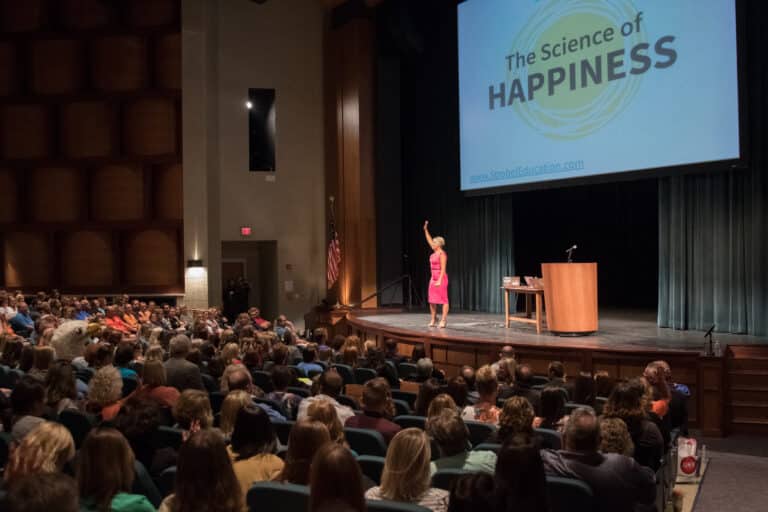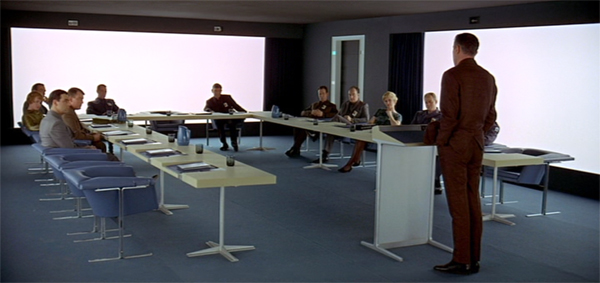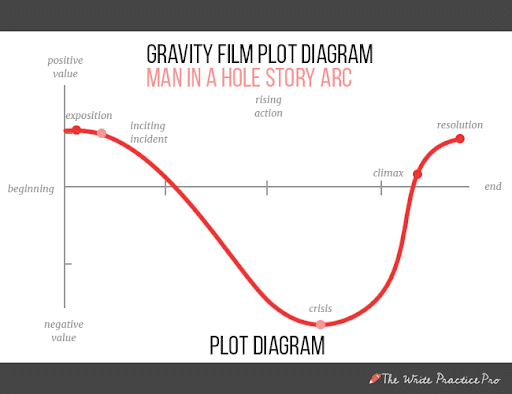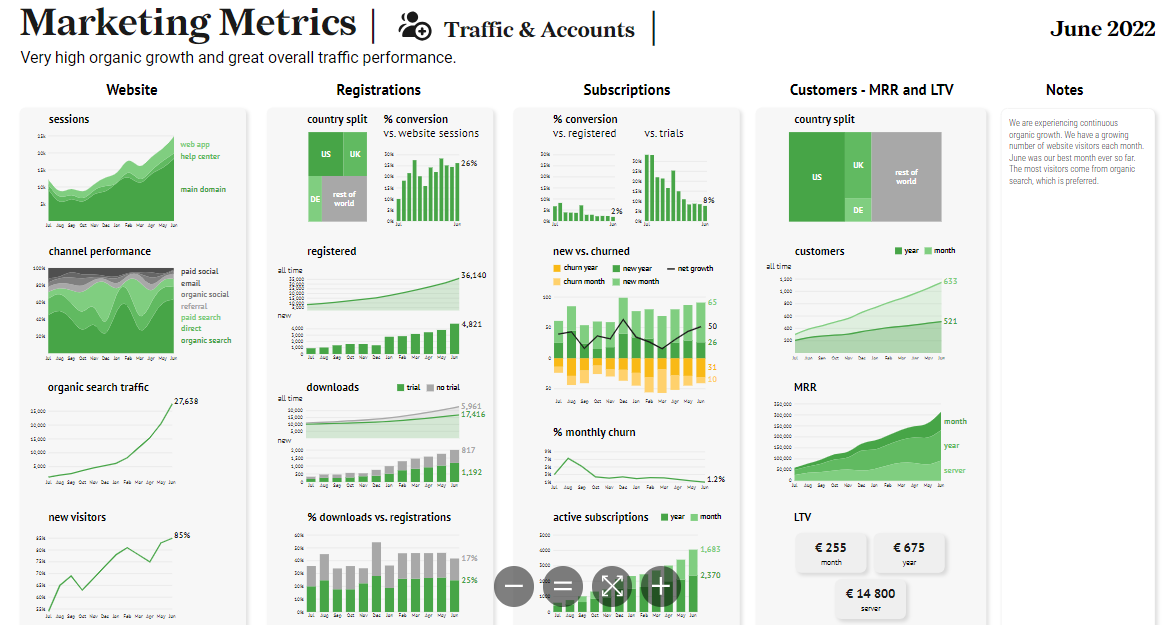Captivating From The First Word: Story-Driven Pitch Openings
The psychology and techniques behind stories that command attention
Have you ever sat through a pitch that began with a barrage of numbers and statistics, only to find yourself checking your phone minutes later? I've been there too. The difference between a forgettable pitch and one that leads to action often comes down to how you open—specifically, whether you've mastered the art of story-driven beginnings.
In this comprehensive guide, I'll walk you through why stories create such powerful neural connections, how to build your personal arsenal of signature stories, and the techniques that will transform your pitch openings from mundane to magnetic. Whether you're pitching to investors, clients, or your own team, these storytelling methods will help you command attention from the very first word.

The Psychology Behind Story-Driven Pitch Openings
When I first started giving presentations, I focused on cramming as many facts and figures as possible into my opening slides. It wasn't until I began my pitch with a personal story about a failed product launch that I noticed a dramatic shift in audience engagement. Why did this happen?
The science is clear: our brains are literally wired for stories. When we hear a compelling narrative, our neural activity increases fivefold compared to processing plain data. This happens because stories activate multiple brain regions simultaneously, creating stronger memory imprints and emotional connections.
Brain Activation During Storytelling vs. Data Processing
The following chart shows comparative brain region activation when processing stories versus factual information.
The Curiosity Gap Technique
One of the most powerful psychological triggers in storytelling is what behavioral scientists call the "curiosity gap"—the space between what we know and what we want to know. When I open a pitch by asking a thought-provoking question or presenting an intriguing scenario without immediately revealing its resolution, I'm leveraging this gap to create tension that demands resolution.
As storytelling expert Dave Bailey notes, "Questions are powerful because they create a curiosity gap. For your questions to land, make sure you use the word 'you' in them." This direct address pulls listeners into your narrative world immediately.
The Emotional-Logical Balance in Effective Pitches
Successful story-driven pitches maintain this delicate balance:
flowchart TD
A[Pitch Beginning] --> B{Balance Point}
B -->|Too Much| C[Emotional Appeal]
B -->|Too Much| D[Logical Data]
C --> E[Feels Manipulative]
D --> F[Feels Boring]
B -->|Just Right| G[Story + Supporting Data]
G --> H[Maximum Impact]
classDef orange fill:#FF8000,stroke:#333,stroke-width:1px;
classDef blue fill:#42A5F5,stroke:#333,stroke-width:1px;
classDef green fill:#66BB6A,stroke:#333,stroke-width:1px;
class C,E orange;
class D,F blue;
class G,H green;
I've found that using PageOn.ai's Vibe Creation tool helps me strike this perfect balance. By analyzing my narrative tone and suggesting adjustments, I can ensure my story opening hits the right emotional notes while setting up the logical framework needed for the rest of my pitch.
Most importantly, research shows that information delivered through stories is retained at rates up to 22 times higher than facts alone. When I need my pitch to be remembered long after I've left the room, I know that starting with a well-crafted story isn't just good presentation technique—it's essential cognitive strategy.
Identifying Your Signature Story Arsenal
Every effective presenter I know maintains what I call a "signature story arsenal"—a collection of personal and professional narratives they can deploy strategically depending on the audience and objective. Building your own arsenal begins with recognizing the different types of stories that resonate in pitch environments.

| Story Type | When to Use | Example Opening Line |
|---|---|---|
| Origin Story | When establishing authenticity and purpose | "Three years ago, I found myself facing a problem no existing solution could solve..." |
| Customer Journey | When demonstrating real-world impact | "Let me tell you about Sarah, who came to us when her business was on the brink of failure..." |
| "Hockey-stick" Moment | When highlighting growth potential | "Everything changed the day we discovered the one feature our users couldn't live without..." |
| Personal Transformation | When building emotional connection | "The biggest mistake I ever made taught me the principle that now drives our entire company..." |
I've learned that matching story types to specific pitch scenarios is crucial. When I'm pitching to investors focused on scalability, my hockey-stick moment story about unexpected viral growth creates immediate interest. When speaking to potential partners concerned with company values, my origin story highlighting our ethical foundations resonates more effectively.
The key is developing a framework for cataloging these stories. I use PageOn.ai's AI Blocks feature to create a visual map of my story collection, tagging each narrative with relevant themes, emotional triggers, and appropriate audience types. This helps me identify gaps in my arsenal and ensures I'm never caught without the perfect opening story.
Story Arsenal Mapping
Visual organization of your signature stories by audience and objective:
graph TD
A[Your Story Arsenal] --> B[Investor Pitches]
A --> C[Client Presentations]
A --> D[Team Motivation]
B --> B1[Origin Story]
B --> B2[Hockey-stick Moment]
B --> B3[Market Insight Story]
C --> C1[Customer Journey]
C --> C2[Problem-Solution]
C --> C3[Results Story]
D --> D1[Vision Story]
D --> D2[Challenge Overcome]
D --> D3[Personal Transformation]
style A fill:#FF8000,stroke:#333,stroke-width:2px
style B,C,D fill:#f9f9f9,stroke:#333,stroke-width:1px
style B1,B2,B3,C1,C2,C3,D1,D2,D3 fill:#f5f5f5,stroke:#ddd
When developing your startup storytelling arsenal, remember that authenticity matters most. The most powerful stories in my collection are those I've personally experienced and can share with genuine emotion. These are the stories that create true connection with my audience, regardless of the specific pitch context.
Audience-Centered Story Selection
I've learned the hard way that even the most compelling story will fall flat if it doesn't resonate with the specific concerns of my audience. That's why I now invest significant time researching my listeners before selecting which opening narrative to deploy.
Audience Research Impact on Pitch Success
Data shows how audience-tailored stories affect key pitch metrics:
Methods for Audience Research
Before any important pitch, I follow these research steps to ensure my opening story hits the mark:
- LinkedIn profile analysis of key decision-makers
- Review of recent company news, press releases, and annual reports
- Conversations with mutual connections who know the audience
- Industry trend analysis to understand current priorities and pain points
- Study of the organization's public messaging and stated values
This research helps me assess what truly matters to my specific listeners. As Forbes notes, "You have to spend time getting to know what matters to them... you can assess what their roles are responsible for and possibly concerned about."

I've also developed techniques for customizing familiar stories to resonate with different stakeholders. The same core narrative about our product development process takes on different emphasis when I'm speaking to:
- Technical audiences: I highlight the engineering challenges we overcame
- Marketing teams: I focus on how we identified and validated customer needs
- Executive leadership: I emphasize resource allocation and strategic decision points
- Investors: I showcase market validation and growth metrics
Creating audience personas has dramatically improved my story selection process. Before important pitches, I use PageOn.ai's Deep Search feature to find relevant industry examples that complement my personal stories, adding credibility and demonstrating that I understand my audience's specific context.
This introduction narratives approach ensures that my opening story doesn't just capture attention—it signals to my audience that I've done my homework and understand their unique perspective. This foundation of respect sets the stage for a more receptive listening experience throughout the rest of my pitch.
Crafting the Perfect Story Opening
Once I've selected the right story for my audience, I focus on crafting an opening that immediately grabs attention. Through years of pitching, I've refined three powerful techniques that consistently create engagement from the first sentence.
The Question Technique
I've found that beginning with a thought-provoking question immediately activates my audience's minds. The key is formulating questions that include "you" to create personal relevance.
"Have you ever invested months in developing a product, only to discover your target market doesn't actually want it? That's exactly where I found myself last year..."
Questions like these work because they create what psychologists call a "curiosity gap"—the space between what we know and what we want to know. Our brains are naturally wired to seek closure for open loops, which means a well-crafted question keeps listeners engaged as they anticipate the resolution.
Question Types for Different Pitch Contexts
Selecting the right question format based on your pitch objective:
I use PageOn.ai to visualize the emotional journey my questions will trigger, ensuring they create the right tension to make my solution compelling when revealed later in the pitch.
Scene-Setting Mastery
Another powerful opening technique I've mastered is transporting my audience directly into a vivid scene. By engaging multiple senses, I create an immersive experience that makes my story unforgettable.
"Picture yourself in a crowded conference room. The air is thick with tension. You're about to present a solution that could either save the project or waste the company's last resources. Your palms are sweating as you open your laptop..."
When setting a scene, I focus on sensory language that creates immersive experiences. I describe what can be seen, heard, felt, and sometimes even smelled or tasted. This multisensory approach activates more regions of the brain, creating stronger memory imprints.

Using contrast and unexpected elements helps capture attention. I might describe a high-stakes business situation but focus on an unusual detail that creates intrigue. PageOn.ai helps me visualize these scenes to complement my verbal storytelling, creating dual-channel processing that enhances comprehension and retention.
The "What If" Framework
The third technique I rely on is structuring my opening around a compelling possibility. This approach is particularly effective when pitching innovative solutions or disruptive ideas.
"What if you could predict customer churn before it happens? What if you had a system that flagged at-risk accounts with 92% accuracy, giving your team time to intervene before it's too late?"
This framework creates tension through problem-solution storytelling. I first establish a significant pain point that resonates with my audience, then build anticipation before revealing my solution. The "what if" setup primes listeners to view my offering as the answer to an important question they're now invested in.
I use PageOn.ai to create visual "before and after" scenarios that amplify my what-if statements. These comparative visualizations make the contrast between the current problem state and my proposed solution dramatically clear, strengthening the narrative impact of my pitch opening.
Visual Storytelling Elements That Enhance Verbal Narratives
I've discovered that the most memorable pitch openings combine powerful verbal stories with strategic visual elements. This dual-channel approach dramatically increases audience engagement and information retention.
The key is understanding the principles of visual-verbal synchronization. When I align what I'm saying with what I'm showing, I create a cohesive experience that feels intentional and polished. This synchronization requires careful timing—visual elements should appear precisely when they support a key point in my verbal narrative.
Visual-Verbal Synchronization Framework
How to align visual elements with your story structure:
flowchart TD
A[Story Opening] --> B[Establish Problem]
B --> C[Build Tension]
C --> D[Reveal Solution]
D --> E[Show Impact]
V1[Simple Emotional Image] -.-> A
V2[Problem Visualization] -.-> B
V3[Contrast/Comparison Visual] -.-> C
V4[Solution Diagram] -.-> D
V5[Results/Outcome Visual] -.-> E
style A,B,C,D,E fill:#f5f5f5,stroke:#333,stroke-width:1px
style V1,V2,V3,V4,V5 fill:#FF8000,stroke:#333,stroke-width:1px
I've learned that simple visual aids that amplify rather than distract from my story are most effective. Complex slides with dense information often pull attention away from the narrative. Instead, I use high-impact imagery with minimal text that reinforces my key message.

Understanding the psychology of image selection has dramatically improved my pitch openings. Research shows that certain types of imagery create stronger emotional responses:
- Human faces: Create immediate emotional connection and trust
- Before/after contrasts: Visually demonstrate transformation and value
- Unexpected juxtapositions: Capture attention through surprise
- Simple metaphors: Make complex concepts immediately understandable
- Color psychology: Strategic use of color to reinforce emotional tone
I leverage PageOn.ai's AI-driven visual tools to transform abstract concepts into compelling imagery. This is particularly valuable when pitching complex ideas that might otherwise be difficult to grasp. By creating visual metaphors and simplified representations, I make sophisticated concepts accessible to any audience.
Visual Element Impact on Audience Comprehension
Research on how different visual elements affect understanding and retention:
The most powerful visual storytelling approach I've discovered is creating what I call "progressive revelation"—starting with a simple visual and gradually adding layers of detail as my story unfolds. This creates a sense of journey and discovery that keeps audiences engaged throughout my pitch opening and beyond.
Practicing Your Story-Driven Opening
Even the most brilliantly crafted story opening will fall flat without proper delivery. Through years of pitching, I've developed specific techniques for practicing story-driven openings that ensure authentic, confident delivery every time.
Memorizing Story Beats Without Sounding Rehearsed
Rather than memorizing my opening word-for-word, I focus on internalizing the key beats of my story. This approach allows me to maintain natural speech patterns while ensuring I hit all important points.
Story Beat Memorization Technique
How to structure story practice for natural delivery:
graph TD
A[Full Story] --> B[Identify Key Beats]
B --> C[Create Mental Anchors]
C --> D[Practice Transitions]
D --> E[Vary Language]
E --> F[Record & Refine]
style A fill:#FF8000,stroke:#333,stroke-width:1px
style B,C,D,E,F fill:#f5f5f5,stroke:#333,stroke-width:1px
For each story in my arsenal, I create what I call "mental anchors"—vivid images or emotions that trigger the next part of my narrative. This technique keeps my delivery fresh while ensuring I don't forget critical elements.
The 90-Second Rule
Through extensive testing, I've found that opening stories should generally last no more than 90 seconds. This timeframe is long enough to create emotional impact but short enough to maintain attention and leave the audience wanting more.

When practicing, I time each run-through and ruthlessly edit any elements that don't directly serve my core message. This discipline ensures my opening story creates maximum impact without delaying the substantive content of my pitch.
Reading the Room and Adapting
No matter how well I prepare, I know that real-world pitch situations require flexibility. I practice identifying audience cues that might indicate I need to adjust my approach:
- Engagement signals: Leaning forward, nodding, eye contact
- Disengagement signals: Checking phones, side conversations, crossed arms
- Confusion signals: Furrowed brows, tilted heads, questioning looks
- Time pressure signals: Checking watches, restlessness
For each story in my arsenal, I develop abbreviated and extended versions, allowing me to adjust on the fly based on audience response and time constraints. This adaptability has saved countless pitches when unexpected circumstances arose.
I use PageOn.ai to create practice scenarios with different audience reactions, helping me prepare for various reception types. This simulation approach has dramatically improved my ability to read the room and make real-time adjustments to my story delivery.
From Opening Story to Full Pitch: Creating Narrative Coherence
I've found that the most effective pitches don't treat the opening story as an isolated element—they weave that narrative throughout the entire presentation to create a cohesive experience. This technique, which I call "narrative threading," dramatically increases the memorability and impact of my pitches.
Narrative Threading Technique
How to weave your opening story throughout your pitch:
flowchart TD
A[Opening Story] --> B[Key Message 1]
B --> C[Key Message 2]
C --> D[Key Message 3]
D --> E[Call to Action]
A -.-> B1[Story Callback]
B1 -.-> B
A -.-> C1[Story Callback]
C1 -.-> C
A -.-> D1[Story Callback]
D1 -.-> D
A -.-> E1[Story Resolution]
E1 -.-> E
style A fill:#FF8000,stroke:#333,stroke-width:2px
style B,C,D,E fill:#f5f5f5,stroke:#333,stroke-width:1px
style B1,C1,D1,E1 fill:#FF8000,stroke:#333,stroke-width:1px,stroke-dasharray: 5 5
Creating narrative callbacks that reinforce key points is essential to this approach. If my opening story describes a customer struggling with data management, I might reference that character again when presenting our solution's features: "Remember Sarah, who was drowning in spreadsheets? This dashboard would have saved her 15 hours every week."

Building a story arc that carries emotional momentum requires careful planning. I map my pitch narrative to follow classic dramatic structure:
- Exposition: My opening story introduces the core problem or opportunity
- Rising action: I present market data and contextual information that builds tension
- Climax: I reveal my solution at the peak of audience interest
- Falling action: I provide implementation details and evidence of success
- Resolution: I return to my opening story, showing how the solution creates transformation
This structure creates a satisfying narrative arc that keeps audiences engaged throughout the entire presentation. The resolution is particularly powerful when it circles back to the opening story, creating a sense of completion and emotional payoff.
I use PageOn.ai to map my entire pitch narrative flow from hook to close, ensuring that my story elements are strategically placed for maximum impact. This visual mapping helps me identify opportunities to strengthen narrative coherence and emotional resonance throughout the presentation.
Measuring Story Impact and Refining Your Approach
The most valuable lesson I've learned about story-driven pitches is that they require continuous refinement. I've developed systematic methods for gauging audience engagement and collecting feedback that allows me to constantly improve my narrative approach.
Gauging Audience Engagement
During my story opening, I watch for specific signals that indicate engagement levels:
- Physical cues: Forward posture, nodding, eye contact maintenance
- Digital environment cues: Camera on, active listening posture (virtual meetings)
- Interaction signals: Note-taking, responsive facial expressions
- Post-story response: Questions that reference story elements
I mentally score these engagement indicators on a scale of 1-10 for each pitch, helping me identify which stories consistently create the strongest connection.
Story Type Effectiveness by Audience
Comparative analysis of story impact across different audience types:
Collecting Structured Feedback
After important pitches, I systematically gather feedback on my storytelling approach:
- Direct questions to decision-makers about which elements resonated most
- Follow-up surveys with specific questions about the opening story
- Recording and reviewing presentations to identify engagement patterns
- Tracking which story elements are referenced in subsequent communications
This feedback has been invaluable for refining my persuasive speech ideas and storytelling techniques. For example, I discovered that technical audiences respond better to origin stories that highlight engineering challenges, while executive audiences prefer customer journey narratives that emphasize business impact.
A/B Testing Story Approaches
For recurring pitch scenarios, I systematically test different story approaches with similar audiences. This controlled experimentation has revealed surprising insights about what truly resonates:
- Stories with specific numerical outcomes outperform general success narratives
- Vulnerability in personal transformation stories creates stronger connection than achievement-focused narratives
- Customer stories featuring relatable challenges outperform those highlighting extreme situations
- Stories with unexpected twists generate significantly higher recall than linear narratives

I use PageOn.ai's analytics to track which visual-narrative combinations perform best. This data-driven approach to storytelling has transformed my pitch success rates, allowing me to continuously refine my opening stories based on real audience response rather than assumptions.
Transform Your Pitch Stories with PageOn.ai
Ready to create visual narratives that make your pitch stories unforgettable? PageOn.ai's powerful visualization tools help you map story arcs, create compelling visuals, and analyze audience engagement—all in one platform.
Start Creating Powerful Story Visuals TodayFrom Opening Story to Lasting Impact
Throughout this guide, I've shared the techniques I've developed for creating story-driven pitch openings that command attention and create lasting impact. From understanding the psychology behind narrative engagement to measuring and refining your approach, these methods will transform how your audiences receive and remember your message.
The most successful pitches I've delivered all began with a carefully selected story that resonated with my specific audience. By building a diverse story arsenal, mastering opening techniques like the question method and scene-setting, and creating narrative coherence throughout your presentation, you'll develop pitch openings that truly captivate from the first word.
Remember that becoming a master of story-driven pitches is an ongoing journey of refinement. Each presentation offers new insights into what resonates with different audiences. By systematically collecting feedback and testing various approaches, you'll continue to strengthen your storytelling skills and achieve increasingly powerful results with every pitch you deliver.
You Might Also Like
From Status Quo to Solution: Crafting the Perfect Pitch Narrative Arc | PageOn.ai
Learn how to transform your business presentations with powerful status quo to solution narratives. Discover visual storytelling techniques that captivate investors and stakeholders.
Mastering Workplace Communication with International Phonetic Alphabet (IPA) - Visual Guide
Discover how the International Phonetic Alphabet transforms workplace communication. Learn visual approaches to implement IPA for clearer global business interactions.
Transform Any Content into Professional Slides: The Ultimate Conversion Guide
Learn expert techniques for converting documents, presentations, and visual content into professional slides with this comprehensive guide to content format transformation.
Beyond "Today I'm Going to Talk About": Creating Memorable Presentation Openings
Transform your presentation openings from forgettable to captivating. Learn psychological techniques, avoid common pitfalls, and discover high-impact alternatives to the 'Today I'm going to talk about' trap.
